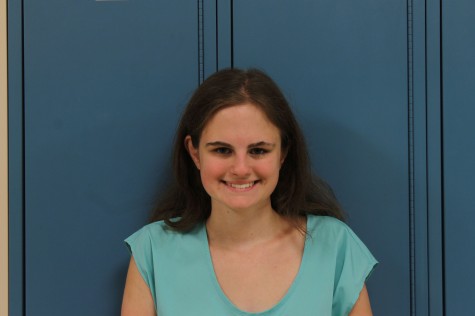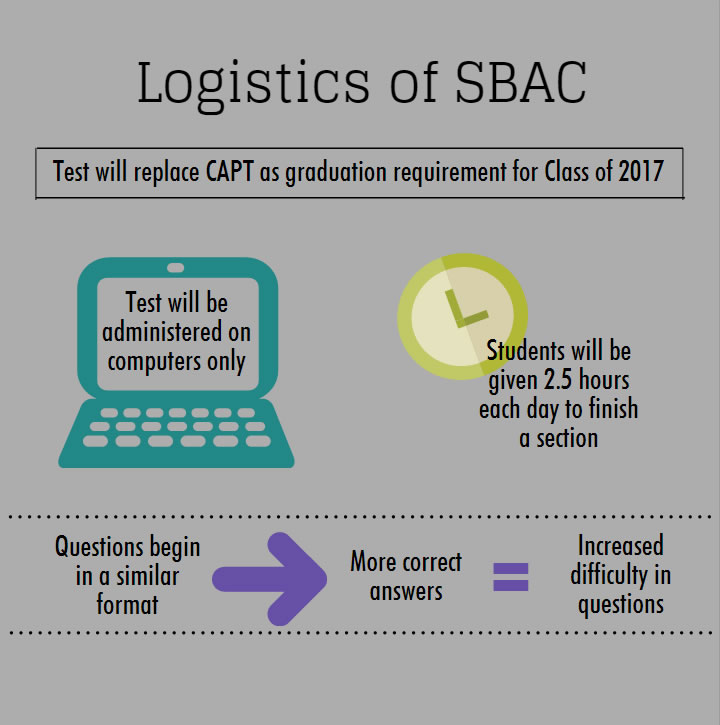SBAC test administered to Class of 2016 in place of CAPT
Gone are the days when teachers assembled their classroom chairs into neat, distant rows so that sophomores could bubble in sheets while hoping for two things: that they would finish before time was called and that these two weeks of test-taking would go by more quickly. This year, a new test means that the packets of paper will be replaced by computers, and there will be no timers set in any of the classrooms.
“Much of the difference is the use of technology for this test and learning how to navigate it,” English teacher Anne Fernandez said.
Fernandez is referring to the arrival of the Smarter Balanced Assessment Consortium (SBAC) in Westport. Formerly, sophomores sat for the state-specific Connecticut Academic Performance Test (CAPT) that includes timed sections in mathematics, reading, writing and science over the course of nine days.
But now Westport has decided to join many other districts in Connecticut and across the U.S. in implementing SBAC. Major changes include the fact that SBAC is taken by juniors, not sophomores, and that the test is taken with a computer and not a Scantron.
According to its website, the purpose of SBAC is to have a test more specifically aligned with Common Core standards that also uses “computer adaptive testing technologies […] to provide meaningful feedback and actionable data that educators can use to help students succeed.”
“SBAC caters to each individual student,” math teacher Leonard Klein said.
What Klein and the SBAC website mean is that if the student gets a question right, the following question will be harder and the opposite if the answer is wrong.
“You have two students with very different skill sets in mathematics,” Klein explained. “While the first few questions will be similar, the computer makes the student with the higher-level skills face progressively more difficult problems.”
This digital aspect of Smarter Balanced is both a new and controversial factor in regards to standardized testing. English teacher Brian Tippy explained how the test page on a screen is arranged in a way that “many could consider confusing.” For instance, in the literary analysis section, the text is on half of the page and questions are on the other half. In addition, the styling of the questions is different.
“In CAPT there was the typical multiple-choice process of picking A, B, C or D,” Tippy said. Some SBAC questions follow this traditional format, but some are structured differently. In the literacy section of the test, some questions require students to highlight evidence that supports a certain statement, and multiple options can be highlighted because there is more than one correct answer. The fact that students can highlight multiple phrases is not always clear in the instructions.
“It’s a way to kind of assess not just if you get it right but how well you do it,” Tippy said.
Another matter that concerns some teachers is how very little about the nature of the new testing process is known yet to the general faculty and students, despite the district’s plan for the exam to be conducted around the end of May. Fernandez explained how practice opportunities for their current juniors have been limited, and no answer keys to sample tests have been made available.
“It’s frustrating when you have so few resources to help your students prepare for the exam at all like this,” Fernandez said.
One aspect of SBAC that remains unclear is when the exam, which has no time limit, is considered completed. According to the SBAC website, “The test ends once the adaptive software determines all the specifications from the test blueprint have been met, and there is sufficient information to provide accurate scores.” The “test blueprint” in question does not make clear whether or not that means students have to complete a specific number of questions.
This style of test that lacks a time limit makes the logistics of administering the test more difficult. Vice Principal Patrick Micinilio explained that during the SBAC examination days, class schedules for the rest of the school will be normal, and juniors will be given about two-and-a-half hours each morning to finish that day’s section. But a student could theoretically take longer than that to complete the test, an issue that has not yet been fully addressed.
“It’s new, so it’s nerve-wracking, especially for me who has to schedule 470 people to take this test,” Micinilio said. “But I’m confident that we’ll figure it out.”

Being a self-described political junkie and a teen travel writer, Justine Seligson '15 is not only, without a doubt, a well rounded student and basically...

















































